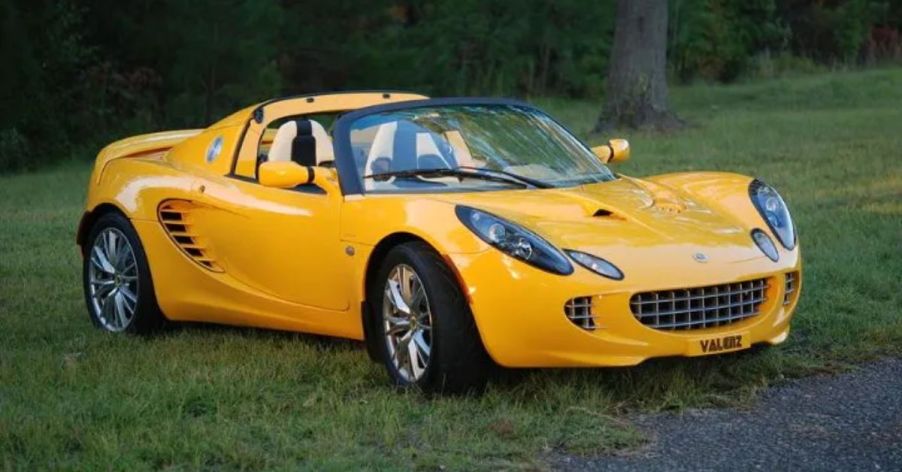
Non-Toyota Vehicles With Reliable Toyota Engines, Plus Other Brand Partnerships

For most car owners, Toyota represents reliability, thanks to high-performance engines in models like the Corolla and Supra. Toyota has also built engines for several manufacturers to boost its brand image by association. Here are ten non-Toyota vehicles with Toyota engines, alongside five strong partnerships that helped them reach more markets and customers.
Chevrolet Nova (1985-1988)

The Chevy Nova was first a trim level for the 1962 Chevy II, but things changed when market preference ended the muscle car era in the ’80s. It became a rebadged Toyota Corolla with a 74 HP 4A-LC engine owners loved for its 30 mpg in the city. Eight years later, Nova got the sportier 110 HP Nova Twin-Cam before discontinuation.
Geo/Chevrolet Prizm (1990-2002)

In 1990, General Motors Corporation launched the Geo Prizm, an American version of the Toyota Corolla. It had Toyota engines, with about 130 HP in sporty models. The Prizm replaced the Chevrolet Nova and became a budget-friendly car. Then, the Geo name was dropped in 1998, and the Prizm became a Chevrolet until it was discontinued in 2002.
Pontiac Vibe (2002-2010)

Pontiac’s Vibe was one of the last cars made by Pontiac and the final GMC car built with Toyota. It was a rebadged Toyota Matrix that shared engines and parts. Although General Motors released a second version in 2009, Pontiac was discontinued due to General Motors’ bankruptcy. That was the end of Pontiac and the Vibe.
Lotus Elise (2004-2021)

When the Elise launched in 1996, it sold 12,000 units despite engine issues. However, its lightweight and simple design couldn’t save it for long. In 2004, manufacturers had to upgrade to an 189 HP Toyota engine. Its success led to the 218 HP Elise SC in 2008 and the 2011 Series 3 before production ended in 2021.
Lotus Exige (2004-2021)

The first-generation Lotus Exige had a Rover engine but switched to a Toyota 2ZZ-GE engine in 2004, producing 180 HP. In 2006, the supercharged Exige S got more power, up to 218 HP. Lotus kept improving for years until it introduced the powerful Exige Sport 380 and the final Cup 430 with a 430 HP Toyota engine.
Lotus 2-Eleven (2007-2011)

Lotus created the 2-Eleven as a lightweight, track-focused car to remind fans of its racing history. They ignored the windscreen and doors so the vehicle could weigh less than 1,500 pounds. Then, they added a supercharged 252 HP 2ZZ-GE engine alongside racing upgrades like stiffer springs and semi-slick tires.
Lotfull roll(2009-2021)

When Lotus released the mid-engined Evora in 2009, it had more space than previous editions—the Elise and Exige. The 2+2 sports car had a 3.5-liter Toyota 2GR-FE V6 engine with 276 HP. Over the years, Lotus upgraded the Evora, introducing models like the supercharged Evora 400 with 400 HP until production ended in 2021.
Lotus 3-Eleven (2016-2018)

In 2015, Lotus introduced the 3-Eleven at the Goodwood Festival of Speed as a more extreme version of the Exige. Besides the toned-down interior, it weighed under 2,000 pounds. It also had two versions using the same 3.5-liter, Edelbrock-supercharged Toyota 2GR V6. Road had 410 HP, while Race had 460 HP.
Lotus Emira (2022-Present)

The 2022 Lotus Emira is the brand’s last gas-powered car before going electric. It had the 2022 Emira First Edition, a 3.5-liter Toyota V6 with 400 HP. In 2023, Lotus added an optional 2.0-liter turbocharged engine made by AMG. The Emira represents Lotus’ growth as it considers an electric future. Let’s consider notable brand partnerships.
Toyota and Scion

Though not badged as Toyotas, Scion cars were Toyotas in disguise and were built to attract younger buyers in the early 2000s. The first models, the xA and xB, launched in 2003 and used Toyota’s 1.6-liter 1NZ-FE engine. Scion mostly used these engines until the brand folded up in 2017, but its legacy lives on in other Toyota divisions.
Toyota and Lexus

In 1988, Toyota created Lexus to compete with luxury brands like BMW and Mercedes. Their first car, the Lexus LS400, had a powerful 3.8-liter 1UZ-FE V8. Even today, Toyota still owns Lexus, and both brands often share parts and engines. For example, the famous Lexus LF-A had a unique 1LR-GUE engine that Toyota developed with Yamaha’s help.
Toyota and Suzuki

The history of the Suzuki Baleno in South Africa shows how partnerships can boost a brand. After Baleno’s 2016 launch, it struggled to compete with Toyota and Volkswagen. However, in 2020, it was rebranded as the Toyota Starlet, and sales soared. In October 2020, the Starlet sold over 1,000 units monthly, while the original Baleno did about 50.
Toyota and Subaru

In late 2023, Subaru debuted the new Forester at the LA Auto Show with a significant change—a hybrid system from Toyota called the e-Boxer. This system blends Subaru’s boxer engine with Toyota’s hybrid system. The carmaker is expanding this hybrid system to other models, starting with the smaller Crosstrek crossover, making it more eco-friendly while keeping Subaru’s reliable performance.
Toyota and Perodua

As one of Malaysia’s top-selling car brands, Perodua is considered a national car manufacturer. In 2023, it had a sales volume of about 330,000 units. A huge part of that success goes to its engines, which are made under license from Toyota Group member Daihatsu. Also, its vehicles are distributed and assembled by UMW Toyota Motor.
Toyota and Mazda

The Toyota-Mazda partnership, formalized in 2017, combines the strengths of two automotive giants. It includes a $1.6 billion joint venture plant in Alabama, collaboration on electric vehicle technologies, and shared development of connected-car systems. By combining their expertise and resources, this partnership will enable both companies to innovate more efficiently in the competitive automotive market.


